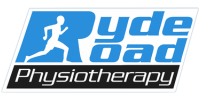Joint Hypermobility
Joint hypermobility is very common in the general population, affecting 20-30% of individuals to some degree either in isolated joints or more generalised. It is most common in childhood and adolescence, in females, and in Asian and Afro-Caribbean races. Joint hypermobility tends to lessen with ageing.
Signs and Symptoms
Joint hypermobility may be of no medical consequence and might even confer advantages for dancers, musicians and athletes. However, it may be associated with:
- Hypermobility of joints, including axial as well as peripheral joints;
- Joint dislocation and/or subluxation;
- Degenerative changes of joints;
- Recurrent soft tissue injuries that typically take longer than average to heal and may become chronic, persistent injury;
- Skin fragility with stretchy skin, easy bruising, scarring, and stretch marks;
- Weakness of the abdominal and pelvic wall with herniation and prolapse;
- Cardiovascular and gastrointestinal autonomic dysfunction that manifest as hypotension, faints / blackouts, and ‘irritable bowel syndrome’ / gastroparesis;
- Cardiac mitral valve prolapse;
- Varicose veins;
- Resistance to local anaesthetics;
- Chronic regional or widespread pain
- Chronic fatigue
- Anxiety
The Beighton modification of the Carter & Wilkinson scoring system has been used for many years as an indicator of widespread hypermobility. However, it should be used with the other signs and symptoms mentioned above.
- The Beighton score is calculated as follows:
- One point if while standing forward bending you can place palms on the ground with legs straight
- One point for each elbow that bends backwards
- One point for each knee that bends backwards
- One point for each thumb that touches the forearm when bent backwards
- One point for each little finger that bends backwards beyond 90 degrees.
Treatment
The physical and pain manifestations of the syndrome are treated with a combination of
- physical therapies (e.g., Physiotherapy, Occupational Therapy, Exercise programmes such as Pilates and Tai Chi);
- analgesics that might include anti-depressants and anti-epileptics at analgesic doses; muscle relaxants; and
- pain management programmes (that would include cognitive behavioural therapy).
There is high level of evidence for strengthening programmes and in particular pilates.
Contact your physio for more information on programmes targeted at hypermobility.
